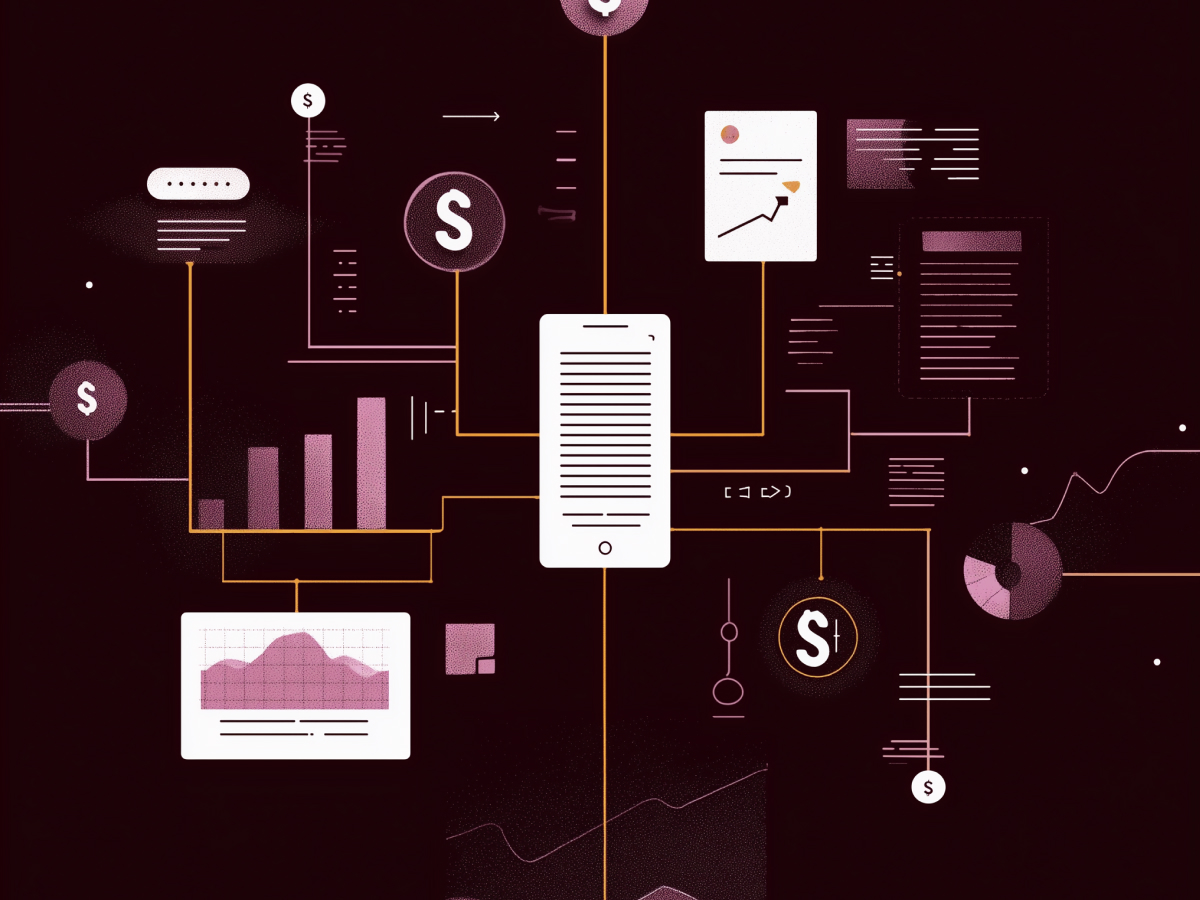Effective SaaS onboarding is key for long-term success
The first few interactions a customer has with your product shape their entire perception of your company. Done well, onboarding builds trust, clears confusion, and confirms the customer made the right decision. Done poorly, it creates doubt.
Onboarding is a revenue safeguard. Research backs this up: Wyzowl reports that 86% of customers are more likely to stay loyal to companies that invest in onboarding content. Many enterprise leaders already know what that means in terms of savings. You reduce churn, and churn is expensive. You increase customer lifetime value, and that’s where the margin lives.
The impact compounds. With good onboarding, customers activate faster, get value sooner, and generate fewer support tickets. That reduces your internal costs and unlocks time for your teams to focus on growth.
Ignore onboarding, and you’re essentially gambling long-term revenue for short-term speed.
Delivering quick, tangible value through onboarding improves user engagement and retention
We all move fast. Your customers are no different. They don’t want a PowerPoint presentation. They want to feel value. Now.
Getting customers to an “aha” moment early is what transforms casual users into committed users. This needs to happen in the first session, not in week two after a training call. SaaS companies like Loom understand this. They prompt the user to record a video immediately instead of explaining all the features. That’s how you show value without saying a word. Guidance is baked into the action.
The sooner a user experiences product value, the less likely they are to abandon it. And when your product earns a place in their daily routine, your customer lifetime value increases. You don’t need layers of explanation. You just need clarity and momentum in the right direction.
For C-suite leadership, this means aligning your product teams, onboarding teams, and content teams to design the customer’s first moments with intention. Most churn happens within the first few days. So that’s where your most strategic thinking should live.
You’re not showing your customer what your product can do, you’re showing them what they can do with your product. That’s the shift. Make it quick. Make it obvious. And make sure it sticks.
Personalizing the onboarding experience improves user satisfaction
Customers want relevance. They don’t want a catalog of features, they want immediate clarity on how this product helps them do their job better. If onboarding content doesn’t reflect the user’s role, objectives, or industry context, most of them will tune out or disengage entirely.
Tools like HubSpot understand this. They launch onboarding with a short survey that asks simple but key questions, role, industry, business goals. The product then reflects those answers in real time with a customized dashboard and contextual tips. The result is higher engagement from the start, because users are only seeing what matters.
From an executive perspective, personalization is a better experience, and a higher-conversion path. It reduces time-to-value, lowers friction, and builds trust in the platform experience. If different customer personas are logging in and seeing the same onboarding sequence, you’re capping your ROI from day one.
This is where behavioral data, segmentation, and automation converge. The tools exist. Good companies use them. Great companies operationalize them. The more relevant you are in the first session, the more likely customers are to come back for the second.
Non-linear learning formats are more effective than traditional tutorials
Traditional tutorials assume users need full explanations before they act. That assumption wastes time. Most users prefer to explore by doing, especially experienced professionals who just want to understand how the product works in the context of their tasks.
Companies like Raycast and Box see this clearly. Instead of pushing long documentation, they embed tooltips, shortcuts, and suggestions directly into the interface. These resources stay out of the way unless triggered, allowing exploration without interference. Users aren’t dragged through a linear process, they find direction based on what they’re doing next.
It takes thoughtful design and the right tooling. It reduces dependency on support and accelerates onboarding without inflating headcount. You build product confidence in less time, for more people.
This method brings knowledge retention by syncing learning to real-time interaction. That keeps users focused and reduces the load on your training or support infrastructure. It means removing the friction that stops them from moving forward. Users aren’t asking for lessons, they’re asking for forward motion. Make space for that.
Integrating onboarding teams with the sales process
Many organizations treat onboarding and sales as separate lanes. That delay in knowledge transfer leads to confusion, mismatched expectations, and frustrated customers. If your onboarding team needs to ask the customer basic questions after the contract is signed, you’ve started the relationship with unnecessary redundancy. Customers notice.
The better approach is continuous alignment. Sales should document key customer goals, use cases, and success criteria before the deal closes. That information needs to move directly into the onboarding workflow. At top-performing organizations, sales and customer success teams review recordings of sales demos, share onboarding readiness checklists, and coordinate the hand-off conversation, so the customer isn’t asked to repeat themselves.
From a C-suite perspective, this is a revenue strategy. Poor onboarding leads to higher churn. And churn puts pressure on CAC efficiency, margin, and forecasting accuracy. When onboarding is aligned with sales, you eliminate siloed communication and deliver a consistent customer experience. That leads to higher activation rates and better expansion opportunities.
It’s simple: the customer experience should feel connected. Internal teams should operate that way too.
Pre-onboarding preparation sets the foundation for customer experience
Good onboarding doesn’t start after the deal, it starts before. Waiting until the software is deployed or credentials are sent wastes valuable momentum. High-retention teams gather relevant data, identify key use cases, and define success metrics well in advance. This shortens ramp-up time and increases time-to-value.
Top operators define clear onboarding timelines, milestones, and responsibilities during the pre-sales or late-sales stage. Expectations are set early, before any training begins. Pre-onboarding might include user interviews, internal landscape reviews, or technical discovery sessions. That context enables faster, more precise onboarding design once the user logs in.
Donna Weber, a leading customer onboarding expert and author, reinforces this point clearly: “Successful customer onboarding starts before the deal closes and extends beyond the customer’s first move within your product.” That kind of long-view thinking builds trust, especially in enterprise deals.
For executives, investing in pre-onboarding isn’t operational overhead, it’s a strategic control point. Done right, it leads to shorter onboarding cycles, fewer escalations, and stronger relationships from day one. The earlier you prepare the customer, the less energy you spend solving downstream problems.
Proactive communication through regular follow-ups and structured check-ins
User engagement doesn’t happen by default. Interest fades quickly after the first login if there’s no clear support or follow-up. That’s where structured, timely communication matters. Short check-in messages on Day 3, feature guidance on Day 7, and milestone reviews by Day 14 are foundational. The point isn’t frequency, it’s precision.
These are intentional nudges that solve specific problems, surface stuck users, and extend a sense of partnership. Execution here relies on a clean system. Behavior-driven triggers, personalized content, and automated support reassure users that they are not operating in isolation.
The data supports acting early. According to ProductLed, 40% to 60% of users never return after the first session. That’s a massive leak in acquisition ROI. Proactive outreach alone doesn’t fix it, but effective touchpoints, with purpose, not fluff, can narrow that drop-off.
For executives, this is where automation and strategy intersect. You’re scaling human-like attention without bloating your team. Investments in onboarding automation aren’t just tech bets, they impact retention, expansion, and NRR. If your onboarding is silent, so are your users.
Gamification and visible progress tracking make onboarding engaging
When users make progress, they want to see it. When users complete key tasks, they want to know it mattered. Visual confirmation, badges, check marks, completion bars, reinforces habit-building and keeps momentum going. It’s functional psychology. It works because it acknowledges the user’s effort in real-time.
Platforms like FullStory do this well. They reward task completion with status badges and small celebratory cues tied to onboarding milestones. It’s subtle but powerful. People don’t abandon workflows when they feel like they’re progressing. That’s critical during onboarding, where attention is limited and distractions are constant.
For leadership, think of gamification not as a design add-on but a performance tool. It’s a cost-effective way to encourage behavior change, decrease support dependency, and reduce dropout during early onboarding stages. You want your users to get to full functionality faster, gamified progress tracking does that without needing 1:1 human intervention.
This tactic becomes even more important in multi-user or team-based platforms, where one engaged user can influence others. Make visible progress part of your onboarding structure, not an afterthought. it keeps people moving without forcing them.
Streamlining and automating the onboarding process
Manual onboarding doesn’t scale. It introduces delays, inconsistency, and human error. As user volume grows, these problems compound. Automation solves this. It standardizes the experience while drastically reducing the operational load on your team. Customers move forward independently, without waiting for someone to intervene.
The essentials are clear: trigger-based welcome emails, behavior-driven in-app messages, and automated usage tracking. You notice when users get stuck. You intervene before it becomes an issue. Personalization remains key, automation is giving every user what they need, when they need it, without delay.
This approach also gives executive teams something valuable: visibility. You can monitor onboarding performance at scale, identify bottlenecks, and iterate fast. You don’t need to guess where the drop-offs are happening, you see the data.
For leaders focused on efficiency, automation isn’t optional. It drives down cost per customer, speeds up time to value, and maintains experience consistency. Those variables directly influence NPS, churn, and expansion potential. You save time and lower cost without trading off experience quality.
Resource-rich, visual onboarding content supports diverse learning styles
Most users won’t attend a live walkthrough. Many avoid detailed documentation. What they engage with are short, visual, modular onboarding resources, accessible on demand and embedded where needed. These formats accelerate understanding and reduce the burden on your support team.
Companies that build robust onboarding content, video tutorials, interactive checklists, use-case-specific guides, see better retention and lower support tickets. Users who can answer their own questions move through onboarding faster and with more confidence.
High-quality content empowers global users, reduces friction for non-native English speakers, and scales efficiently across teams and locations. The materials must be easy to find, straightforward to follow, and continuously updated. Old documentation signals neglect. Updated, visual resources signal care and clarity.
For C-suite decision-makers, this is an investment with compounding return. This means customer support, brand perception, user success, and time to activation, all tied together through a clear content strategy. If your users rely on your support line to understand basics, your product isn’t underperforming, your content strategy is.
Reinforcing customer goals during onboarding
Many onboarding strategies focus too much on tasks and not enough on outcomes. A user can finish setup steps and still have no idea how those actions are tied to their broader business goals. That disconnect slows momentum and weakens product engagement.
Effective onboarding tracks both activity and goal alignment. From the first conversation, even before login, teams should link every step to something measurable that matters to the customer. Are they aiming to streamline workflows, reduce manual reporting, or consolidate tools? Each onboarding task must reinforce how the product drives that exact outcome.
When users see their progress in the context of real business results, they have a reason to keep going. They stop viewing onboarding as a checklist and start seeing it as a growth path.
For executives, this matters in post-sale metrics. If customer value isn’t talked about until QBRs or renewal cycles, it’s too late. Instead, use automation to deliver periodic progress reports that connect product usage to business improvement. Visibility drives trust. Trust drives retention. That has material impact on churn and expansion.
Building a strong community and providing ongoing education
Initial onboarding gives customers the basics, but sustained adoption comes from continuous learning and a sense of shared progress. This goes beyond resources. It’s about access, involvement, and shared learning between users and between users and your team.
High-performing companies run live training sessions, certification programs, and community challenges that incentivize customers to explore deeper functionality. They publish new content regularly and spotlight power users who share real workflows. These programs make the customer more invested, in usage, and in progress.
This is especially effective at scale. When users solve problems for each other, adoption accelerates organically. When they influence roadmap discussions, they stay longer. Product use starts to feel collaborative instead of transactional.
The bottom line
Most onboarding strategies are focused on activity. The better ones are focused on outcomes. But the best ones, what we’ve talked about here, are built around momentum. That’s what matters when you’re trying to scale intelligently: frictionless first steps, fast time-to-value, and a clear path from signup to success.
For executives, onboarding is no longer just a function of customer support, it’s a strategic lever for retention, expansion, and lifetime value. You can measure its impact, operationalize its delivery, and tie it directly to revenue. The right systems teach your product and change the trajectory of the entire customer relationship.
Your product is only as powerful as a new customer’s first experience with it. Investing in onboarding that’s lean, relevant, and engineered for speed leads to precision. No wasted steps. No missed signals.
If you want more engaged users, stronger renewals, and compound growth, this is where it starts. Day one. Every time.





